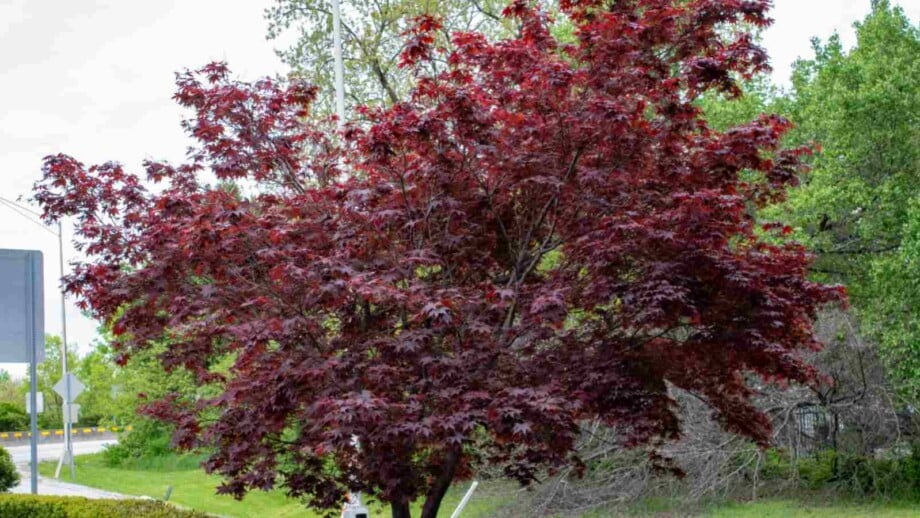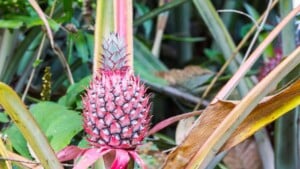The Bloodgood Japanese Maple, scientifically known as Acer palmatum ‘Bloodgood,’ is a deciduous tree celebrated for its stunning foliage. Imagine a tree that stands tall, adorned with intricately shaped leaves that burst into a breathtaking display of reds and purples come autumn. Even the bark of a Bloodgood Japanese Maple catches the eye with its silver color. This ornamental masterpiece grows up to 20 feet tall, creating a captivating focal point in any landscape. The finely serrated leaves add a touch of delicate grace, while the branching structure evokes a sense of natural artistry.
Now, let’s explore the diverse family of Bloodgood Japanese Maples. From laceleaf varieties like the ‘Dissectum’ to upright versions like the classic ‘Bloodgood,’ each type offers a unique twist to this botanical symphony. Native to Japan and Korea, these maples have found their way into gardens worldwide, thriving in temperate climates. Their adaptability has made them a favorite among gardeners, bringing a touch of the East to landscapes far and wide.
Beyond their aesthetic appeal, Bloodgood Japanese Maples boast a range of practical uses. These trees make for fantastic focal points in gardens, creating a sense of tranquility and harmony. Their compact size makes them ideal for smaller spaces, while their vibrant foliage lends itself to stunning autumn displays. Whether used as standalone specimens or incorporated into a broader landscape design, the Bloodgood Japanese Maple adds a touch of sophistication and drama.
Certainly one of the most favored choices for a standout tree in residential landscapes, this tree boasts rich burgundy-purple palm-shaped foliage throughout the year and an artistically spreading growth pattern. So, whether you’re a seasoned gardener or a green-thumb newbie, the Bloodgood Japanese Maple welcomes you to a world where elegance meets horticultural finesse. Placing it in the front yard is recommended, providing ample space for its graceful expansion.
As a master gardener, my admiration for the Bloodgood Japanese Maple runs deep. This guide aims to be your compass through the enchanting world of these trees. From their exquisite foliage to the varieties that make them unique, I’ll spill the secrets. Stay tuned for expert care tips to ensure these crimson wonders thrive in your garden effortlessly.
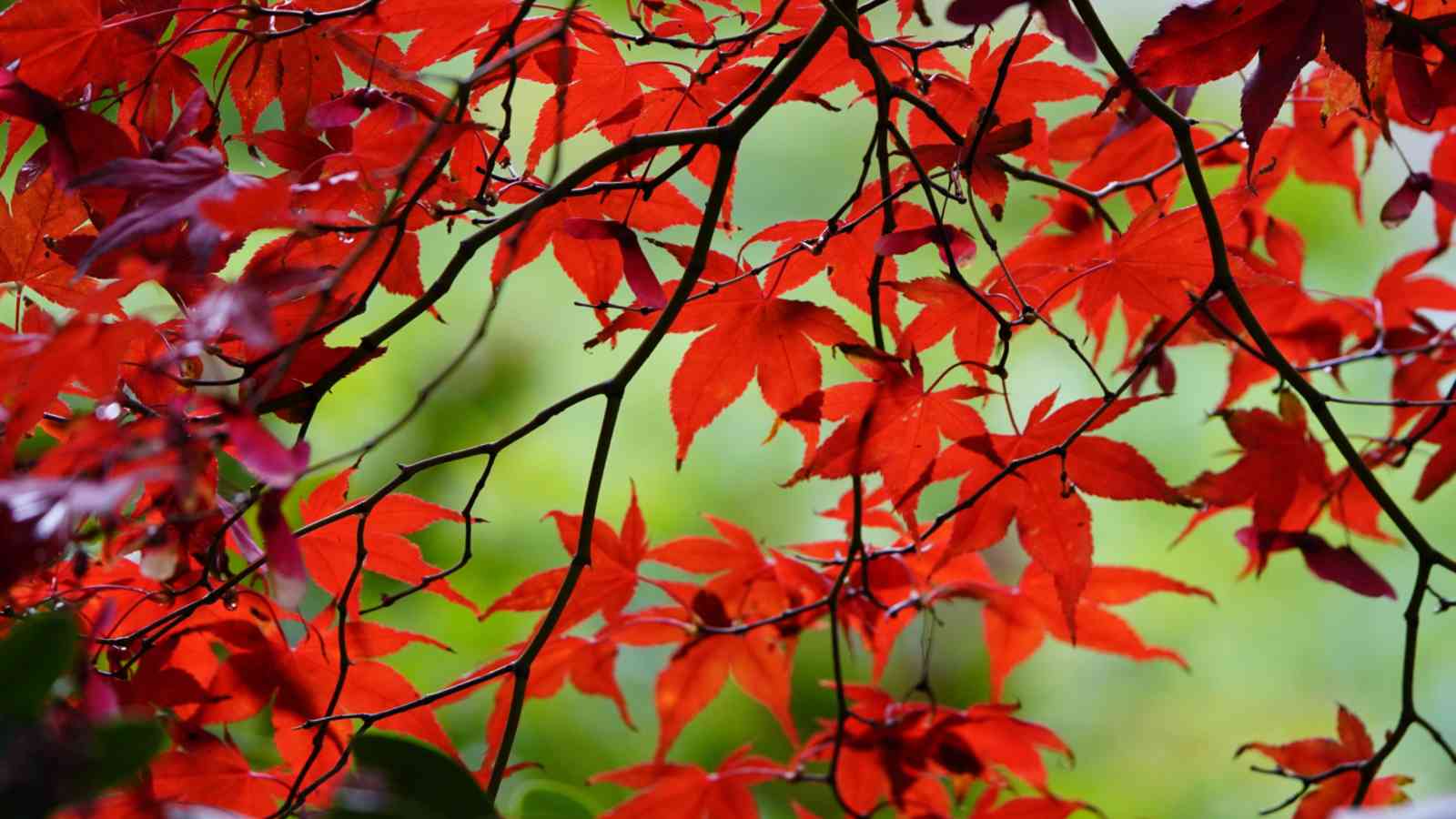
Botanical Name: Acer palmatum ‘Bloodgood’
Common Name: Bloodgood Japanese Maple
Family: Sapindaceae
Plant Type: Deciduous Tree
Hardiness Zones: 5-8
Sun Exposure: Partial to Full Sun
Soil Type: Well-drained, Moist
Soil pH: Slightly Acidic to Neutral
Maturity: 10-15 years
Height: 15-20 feet
Spacing: 15-20 feet
Bloom Time: Spring to Early Summer
Flower Color: Insignificant (small red flowers)
Native Area: Japan and Korea
Bloodgood Japanese Maple Tree Care
Caring for your Bloodgood Japanese Maple is a rewarding journey that begins with understanding its unique needs. One of the hardiest of Japanese maples, Bloodgood showcases deep-red foliage that turns a brilliant scarlet in fall. These deciduous trees thrive in well-drained, moist soil, so ensure proper drainage to prevent waterlogging. Optimal sun exposure ranges from partial to full sun, allowing the tree to showcase its stunning foliage to the fullest.
Regarding soil pH, slightly acidic to neutral conditions are ideal for the Bloodgood Japanese Maple. Regular watering is crucial to maintaining soil moisture, especially during dry spells. Applying a layer of mulch around the base helps retain moisture and regulates soil temperature.
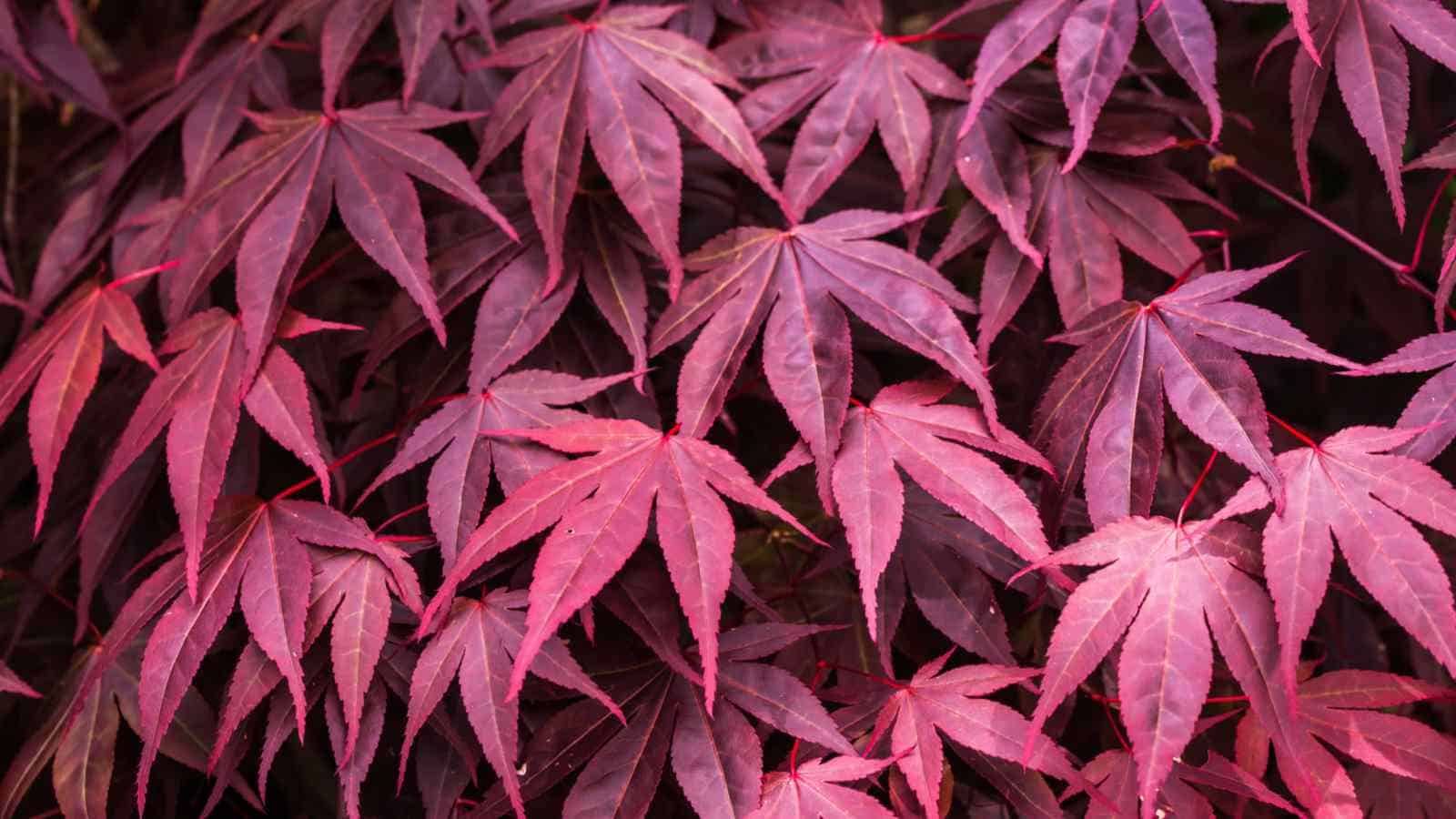
Pruning is an art in itself when it comes to these maples. While they generally have a graceful, natural shape, selective pruning can enhance their aesthetic appeal. Remove dead or damaged branches to promote healthy growth and maintain the desired form.
To boost overall health and vitality, consider fertilizing your Bloodgood Japanese Maple before new growth appears in early spring. A balanced, slow-release fertilizer works wonders, providing the essential nutrients the tree needs for a flourishing display.
By adhering to these care tips, you’ll pave the way for your Bloodgood Japanese Maple to become the crown jewel of your garden, offering a breathtaking symphony of color and form throughout the seasons.
Light
Bloodgood Maples are versatile and will grow in partial shade or full sun. Placing them where they receive adequate sunlight allows the leaves to showcase their vibrant hues, ranging from deep burgundy to fiery red.
While they can tolerate partial shade, exposing your Bloodgood Japanese Maple to more sunlight generally enhances the intensity of its colors. Striking a balance between light and shade ensures a healthy and visually spectacular tree. When planning their placement in your garden, consider the play of sunlight throughout the day to create an ideal setting for this botanical masterpiece.
Soil
Bloodgood Japanese maples prefer well-drained soil with a slightly acidic to neutral pH. This ensures the roots receive the necessary nutrients without the risk of waterlogging. A loose, organically rich soil structure enhances their growth, promoting a healthy and vibrant canopy.

When planting, amend the soil with organic matter to improve its texture and fertility. Mulching around the base aids in moisture retention and regulates soil temperature, creating an environment conducive to the Bloodgood Japanese Maple’s optimal development. By prioritizing these soil requirements, you set the stage for a flourishing and visually stunning addition to your garden landscape.
Water
Proper watering is fundamental to the well-being of your Bloodgood Japanese Maple. These trees thrive in consistently moist soil, so regular watering is key, especially during dry periods. However, striking a balance and avoiding waterlogged conditions is crucial, as excessive moisture can lead to root rot. Monitor the soil moisture, adjusting your watering routine to keep it consistently damp but not saturated. Mulching around the base helps retain moisture and regulates soil temperature, contributing to the overall health and vitality of your Bloodgood Japanese Maple.
Temperature and Humidity
The Bloodgood Japanese Maple, renowned for its vibrant foliage, thrives in temperate climates. These trees are hardy in USDA zones 5 to 8, making them adaptable to various environments. It’s crucial to protect them from extreme temperatures, especially during harsh winter or scorching summer conditions.
Maintaining moderate humidity levels is beneficial for the Bloodgood Japanese Maple, especially in drier climates. Adequate moisture in the air helps prevent stress on the tree and promotes healthy leaf development. In regions with lower humidity, occasional misting or placing a humidity tray near the tree can provide the necessary moisture.
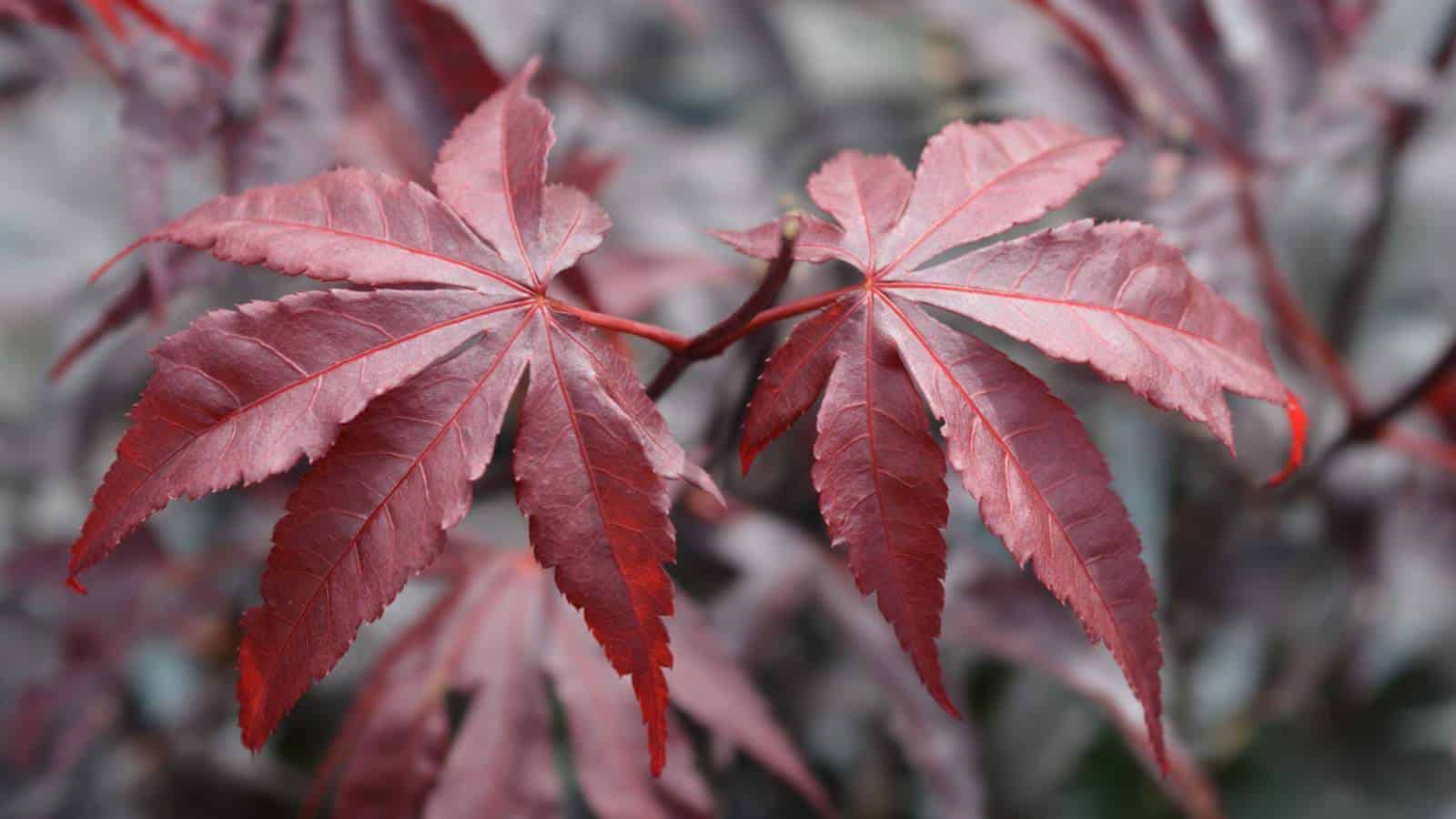
Fertilizer
These trees benefit from a balanced, slow-release fertilizer applied in early spring, just before the onset of new growth. This provides a steady supply of nutrients throughout the growing season, supporting the tree’s overall health and promoting lush foliage.
Aim for a fertilizer with a balanced ratio of nitrogen, phosphorus, and potassium, ensuring that the specific needs of the Bloodgood Japanese Maple are met. Remember, moderation is key; excessive fertilization can lead to issues like leaf burn.
Pruning
When pruning your Bloodgood Japanese Maple, less is often more. These trees typically boast a naturally graceful form, requiring minimal intervention. However, selective pruning can enhance aesthetic appeal and maintain a balanced structure.
Focus on removing dead or damaged branches during the dormant season to encourage healthy growth and maintain the tree’s overall vitality. Additionally, consider thinning out crowded areas to improve air circulation, which can help prevent diseases and promote the vibrant foliage that makes these maples so captivating.
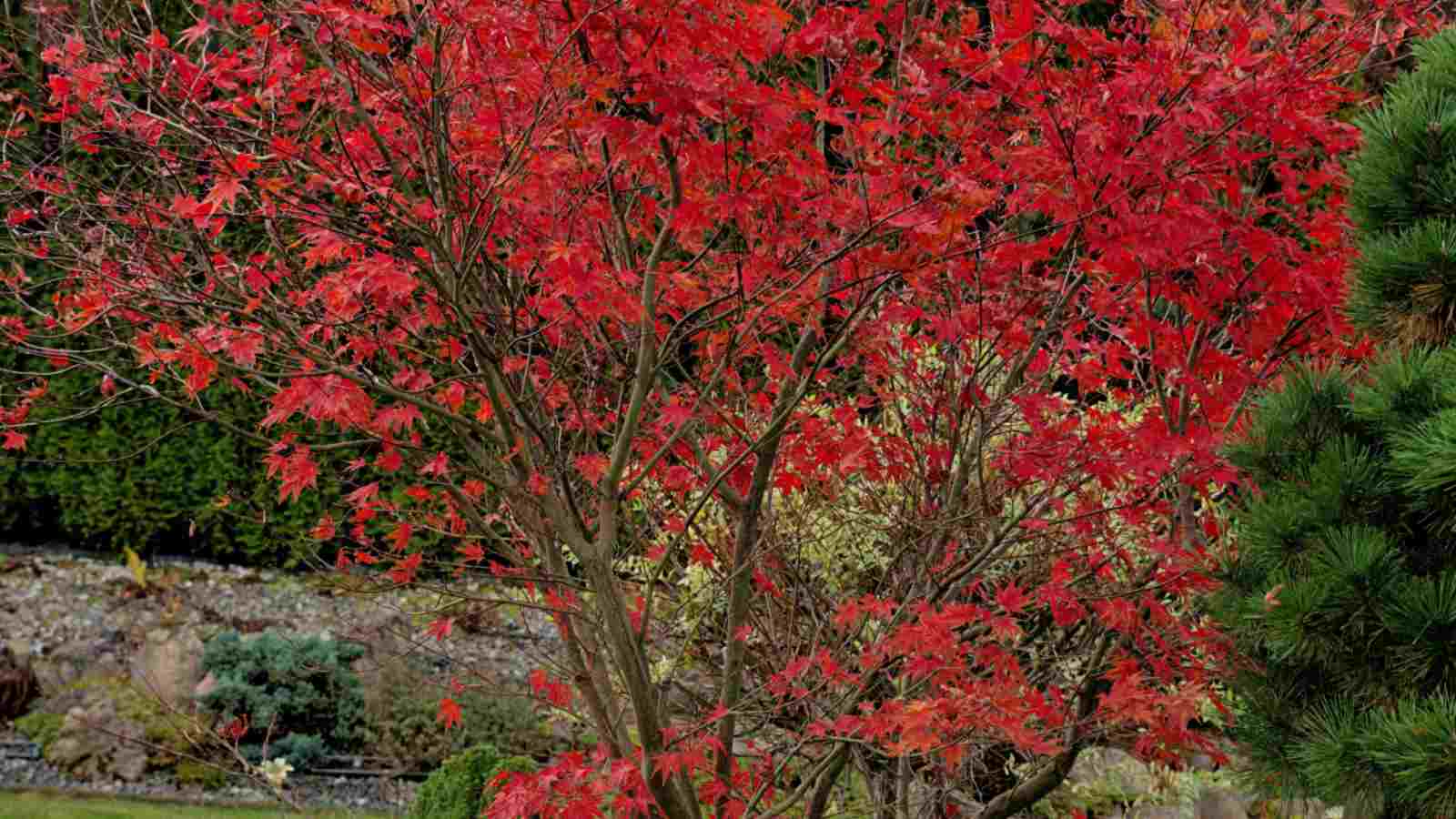
Overwintering
As winter approaches, ensuring the well-being of your Bloodgood Japanese Maple becomes paramount. These hardy trees, suited for zones 5-8, generally withstand colder temperatures well. However, providing a protective layer of mulch around the base in late fall helps insulate the roots and regulate soil temperature during frosty months.
When it comes to overwintering, monitor the moisture levels in the soil. While it’s crucial to keep the soil consistently moist, avoid waterlogging, which can lead to root rot. Consider wrapping the trunk with burlap or tree wrap to shield it from harsh winter winds and prevent sunscald.
In regions with particularly severe winters, you might want to erect a burlap screen or other protective barrier on the windward side of the tree to mitigate winter burn. Taking these simple precautions’ll help your Bloodgood Japanese Maple brave the winter chill and emerge in spring with vigor and vitality.
How to Propagate Bloodgood Japanese Maple
So, you’ve fallen in love with the mesmerizing charm of Bloodgood Japanese Maple and want to grow more? Let’s delve into the art of propagation, turning your admiration into a flourishing garden.
Selecting a Proper Specimen
Begin your propagation journey by choosing a healthy and vigorous Bloodgood Japanese Maple specimen. Look for a tree showcasing robust growth, vibrant foliage, and well-established branches. A strong parent tree sets the stage for successful propagation, ensuring the new plants inherit the desirable traits that make Bloodgood captivating.
Cutting Preparation
Once you’ve identified your ideal candidate, it’s time to prepare the cuttings. Opt for softwood cuttings in late spring to early summer, as these are more likely to root successfully. Take 4-6 inch cuttings, making sure each includes a few sets of leaves. Trim the base at a 45-degree angle just below a leaf node and remove any excess leaves to minimize stress on the cutting.
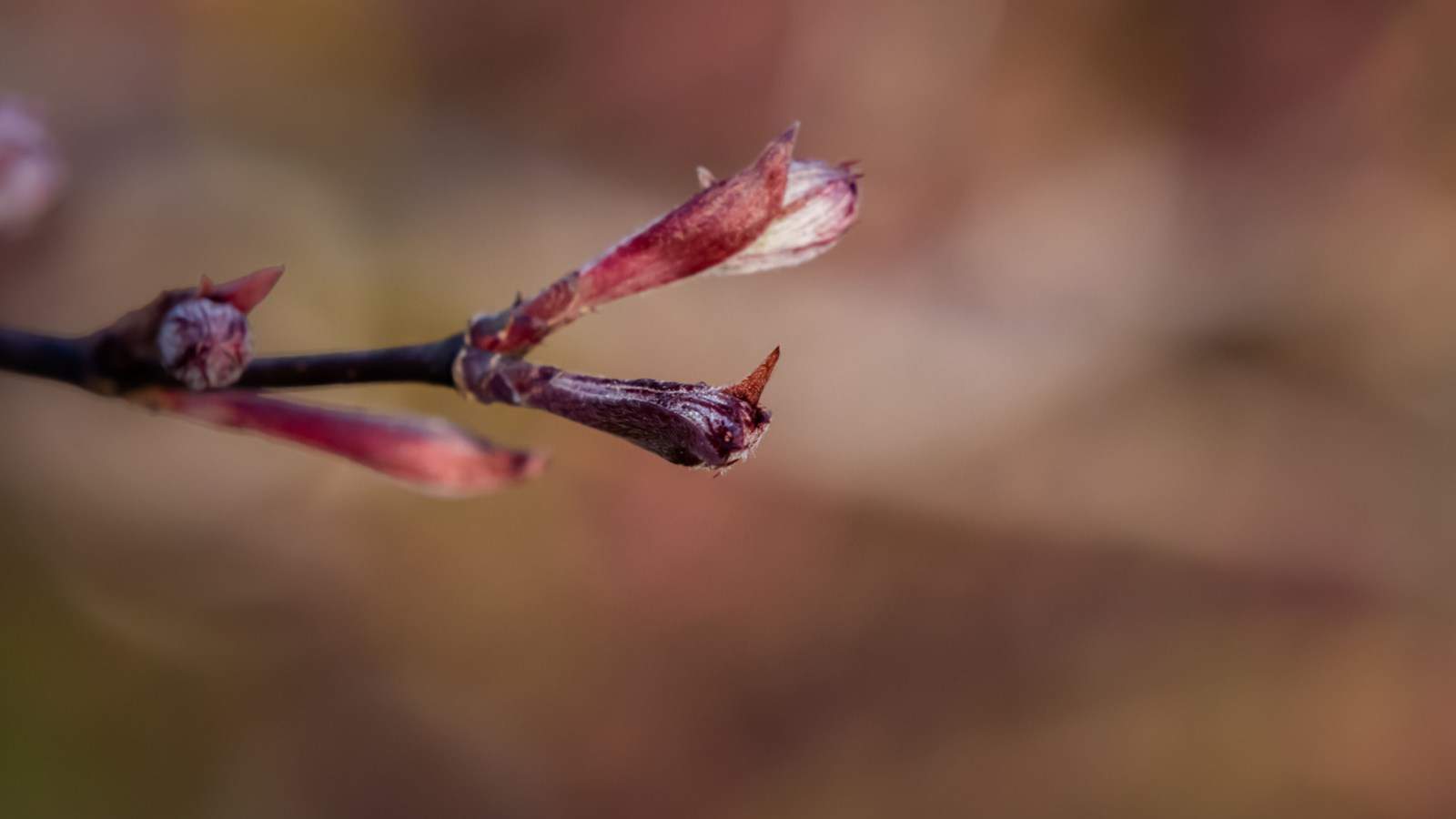
Rooting
Now, the magic begins. Dip the cut end in a rooting hormone to encourage the development of roots, then plant the cutting in a well-draining, moist rooting medium. Maintain a humid environment by covering the cuttings with a plastic bag or placing them in a propagator. Keep the medium consistently moist, and in a few weeks, you’ll start to see the roots emerging. Congratulations, you’re on your way to growing your Bloodgood Japanese Maples!
Care and Maintenance
As your propagated Bloodgood Japanese Maples take root and grow, nurture them with care. Ensure they receive adequate sunlight, water, and nutrients. Regularly check for signs of stress, adjusting care practices as needed. As they mature, the care routine becomes similar to that of established Bloodgood trees, creating a seamless transition from propagation to flourishing ornamental specimens.
Finding a Suitable Location
When it’s time to plant your young Bloodgood Japanese Maples, choose a location with partial to full sun exposure and well-drained soil. Consider the mature size of these trees, allowing ample space for their graceful, spreading growth habit. Placing them strategically in your landscape ensures they become your envisioned focal point.
Common Pests and Diseases
Like any garden treasure, Bloodgood Japanese Maples are not immune to pests and diseases. Watch for common issues such as aphids, scale, or fungal infections. Regularly inspect the foliage; if you spot any unwanted visitors, take prompt action. Organic insecticides or horticultural oils can often address these challenges without harming your Bloodgoods.
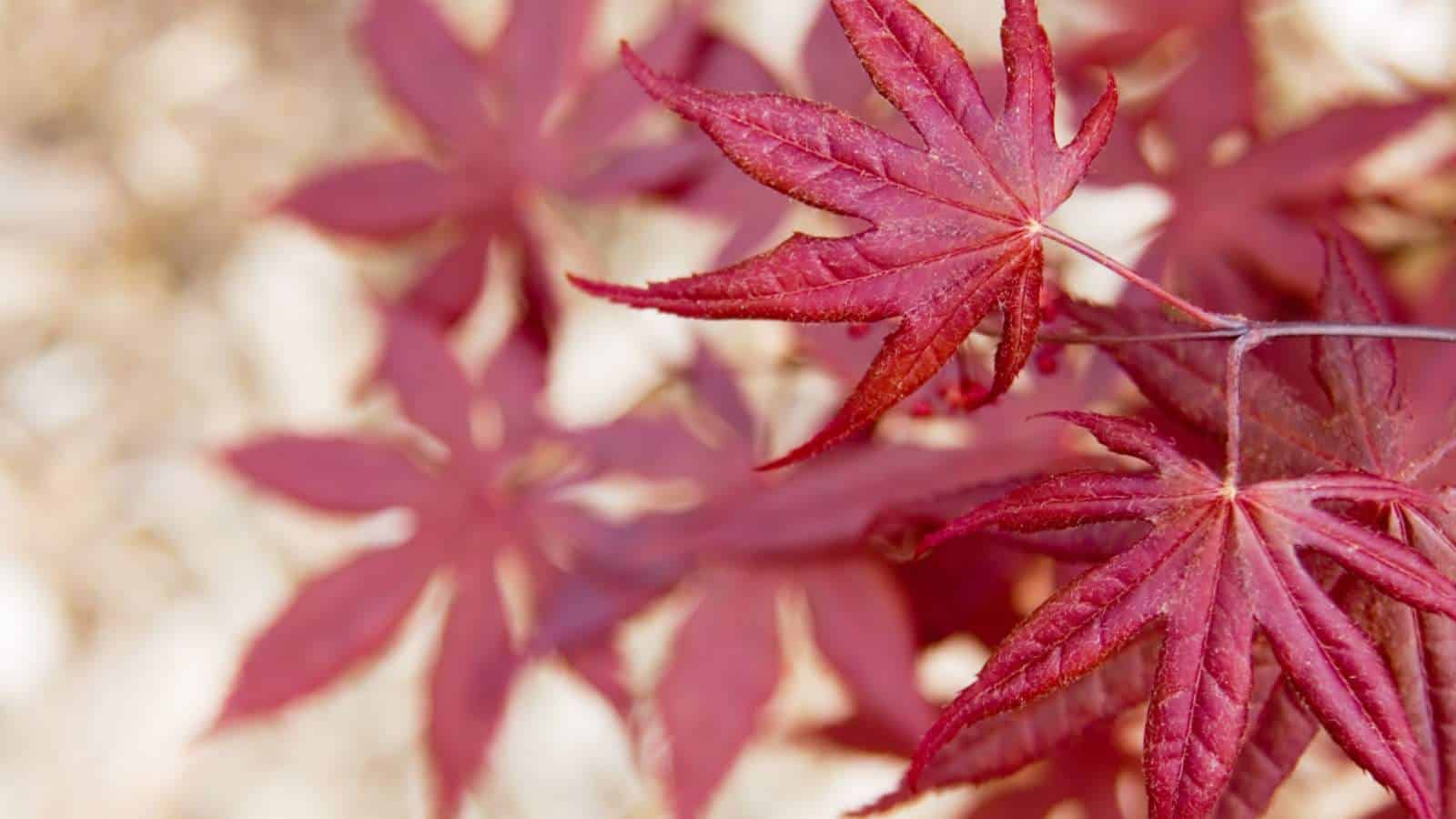
Embarking on the journey of propagating Bloodgood Japanese Maple is a rewarding endeavor, allowing you to multiply the beauty of these captivating trees in your green sanctuary.
Common Pests and Plant Diseases for Bloodgood Japanese Maple
Dealing with pests and plant diseases is a common challenge for any gardener, but fear not! Let’s explore the potential invaders that might threaten your beloved Bloodgood Japanese Maple and arm ourselves with the knowledge to keep them at bay.
Aphids
Aphids can become unwelcome guests on your Bloodgood Japanese Maple. These tiny insects may appear in clusters on the undersides of leaves, causing leaves to curl and distort. Combat these invaders by regularly spraying the tree with a strong stream of water to dislodge them. Alternatively, introduce natural predators like ladybugs or lacewings to maintain a healthy balance in your garden.
Scale Insects
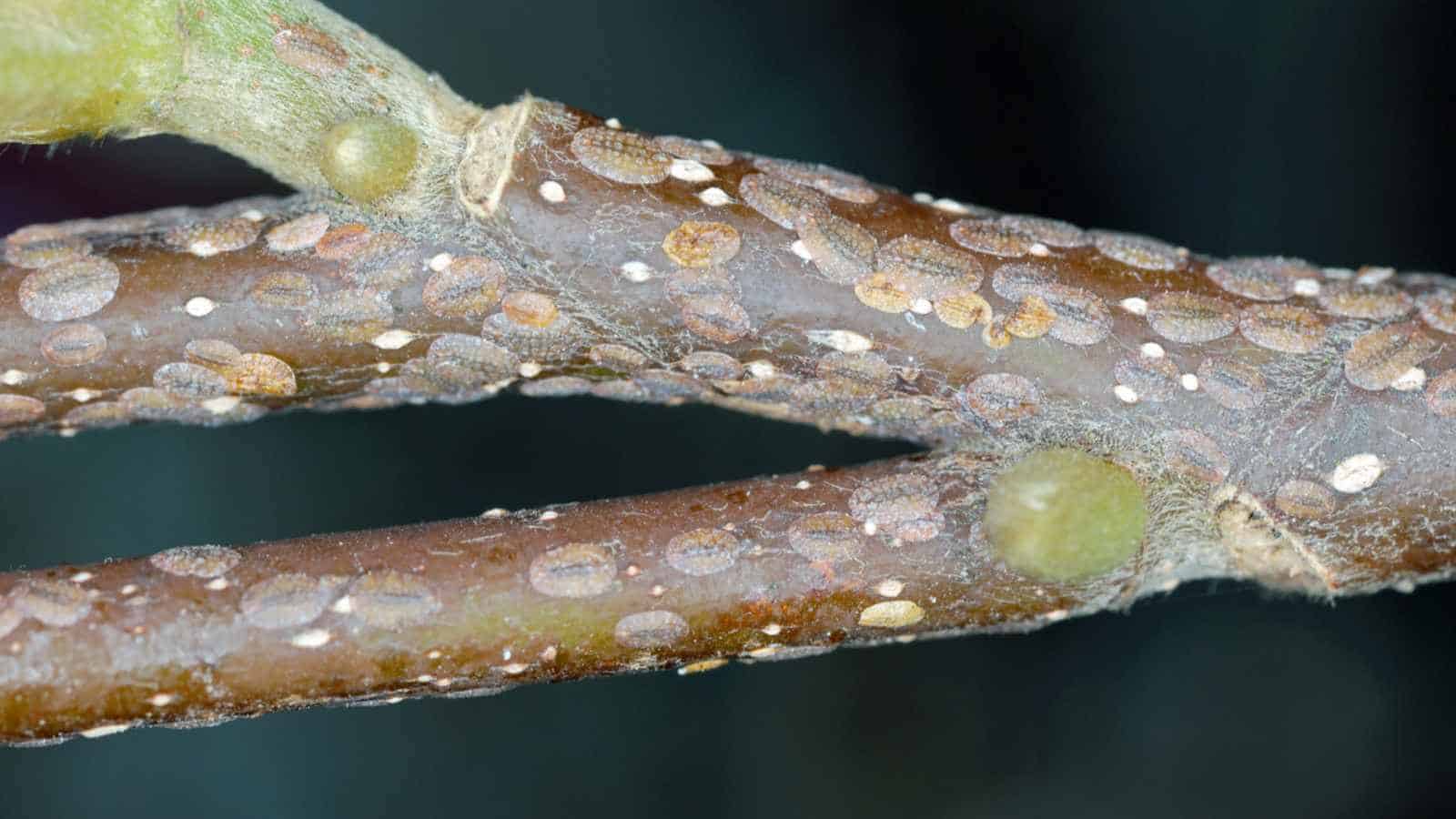
Scale insects are masters of disguise, often blending into the bark, making them tricky to spot. They feast on the sap of your Bloodgood Japanese Maple, leading to weakened growth and potential dieback. To thwart their advances, gently scrub the scales off with a soft brush or cloth, and consider introducing natural predators like parasitic wasps to your garden.
Verticillium Wilt
The ominous-sounding Verticillium wilt is a fungal disease that can affect Bloodgood Japanese Maples. It causes wilting, yellowing, and browning of the leaves, signaling potential trouble. To prevent its spread, promptly prune and dispose of infected branches, ensuring proper air circulation. Choose disease-resistant varieties when planting, and maintain optimal soil moisture to discourage the growth of this fungal menace.
Powdery Mildew
Powdery mildew, recognizable by its powdery white coating on leaves, can plague your Bloodgood Japanese Maple. This fungal disease thrives in dry conditions with high humidity. Combat it by ensuring proper spacing between trees for good air circulation, watering at the base to avoid wetting the foliage, and applying fungicidal sprays as a preventive measure during the growing season.
Anthracnose
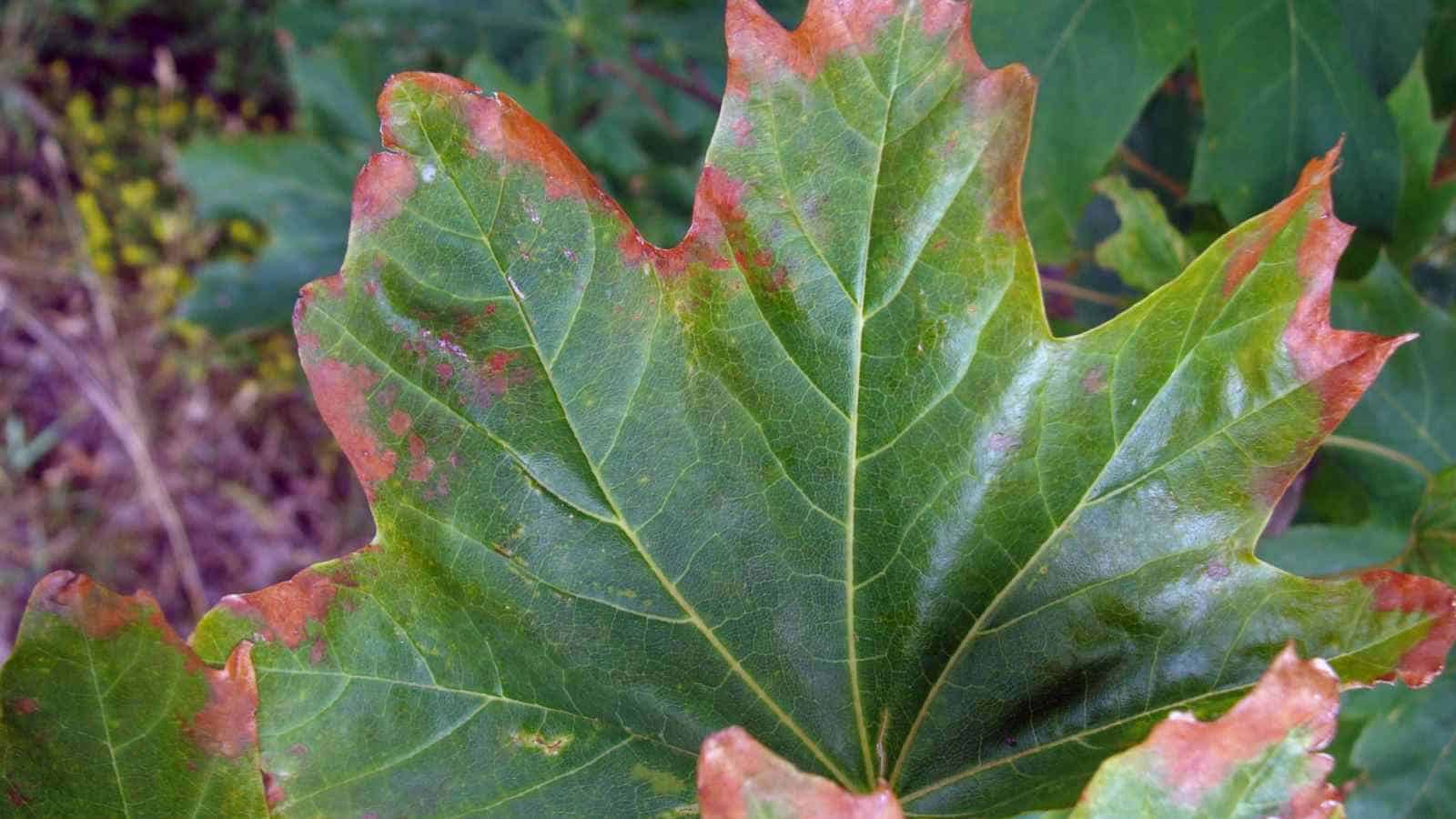
Anthracnose is a fungal disease that manifests as dark spots on leaves and can lead to defoliation. To thwart its progress, prune and destroy infected leaves, ensuring they don’t accumulate around the tree’s base. Apply fungicidal treatments during the growing season as a preventive measure, and maintain a clean garden environment to minimize the risk of recurrence.
Leaf Scorch
Leaf scorch is a condition where the edges of the leaves turn brown and dry, signaling water stress. Ensure your Bloodgood Japanese Maple receives adequate water, especially during hot and dry periods. Mulching around the base helps retain soil moisture, creating a more favorable environment for your tree.
Weevils

Weevils are notorious for nibbling on leaves, causing unsightly notches. Combat these sneaky invaders by introducing beneficial nematodes or using insecticidal sprays. Regular inspection and prompt action will help keep these leaf-loving weevils in check.
Leaf Spots
Leaf spots, caused by various fungi, can mar the beauty of your Bloodgood Japanese Maple. To prevent their spread, ensure proper spacing between trees, prune affected branches, and apply fungicides as a preventive measure. Keep the foliage dry by watering at the base to minimize the conditions conducive to fungal growth.
By staying vigilant and incorporating these preventive measures into your gardening routine, you can safeguard your Bloodgood Japanese Maple from these common pests and plant diseases. Remember, a healthy and thriving garden starts with a proactive defense against potential threats. Happy gardening!
Other Tree Guides from Planet Natural:

